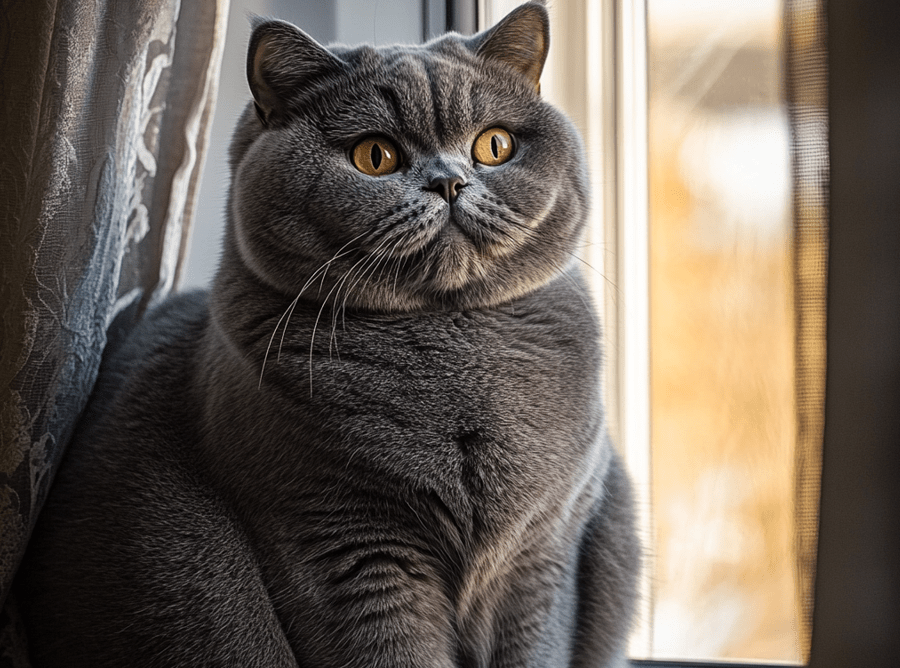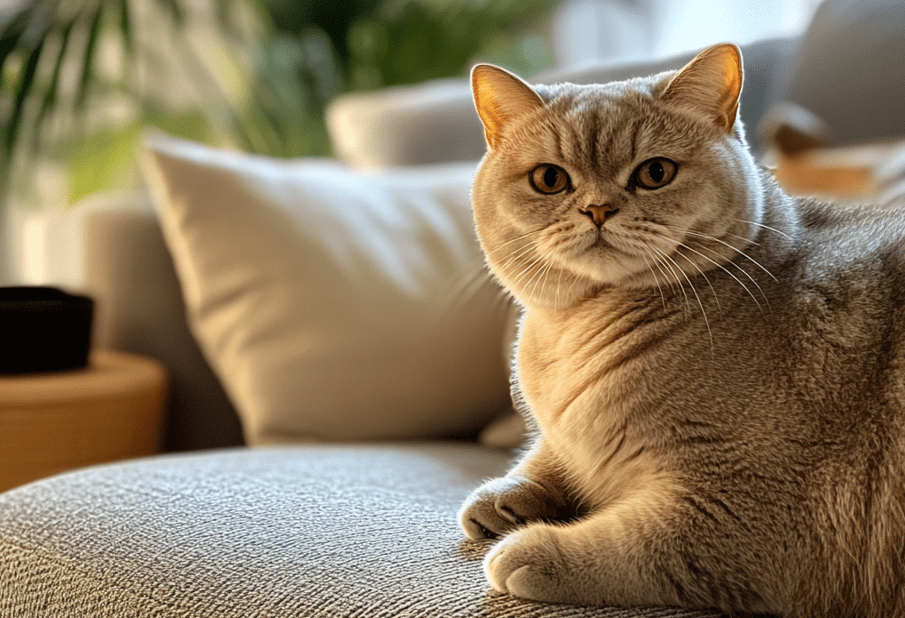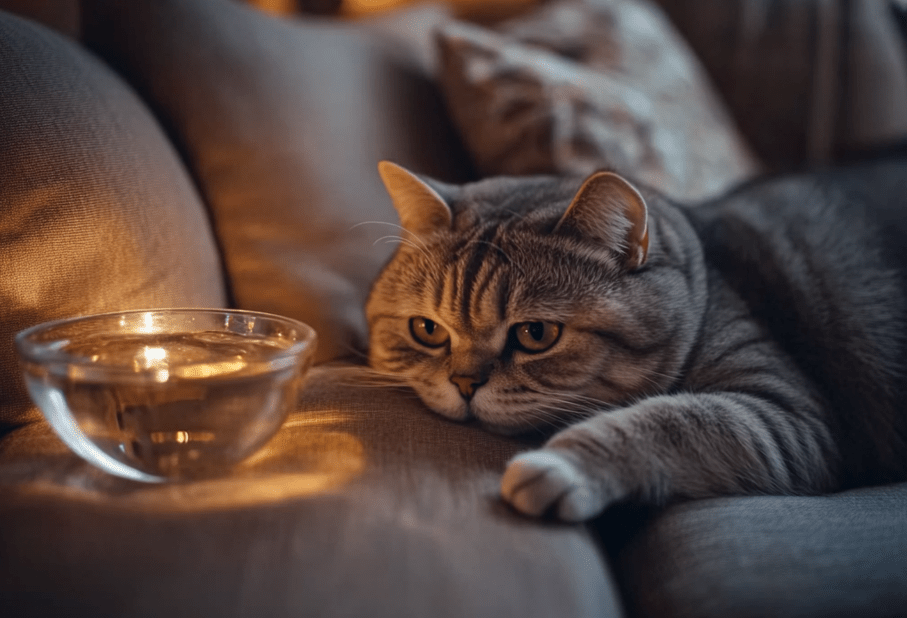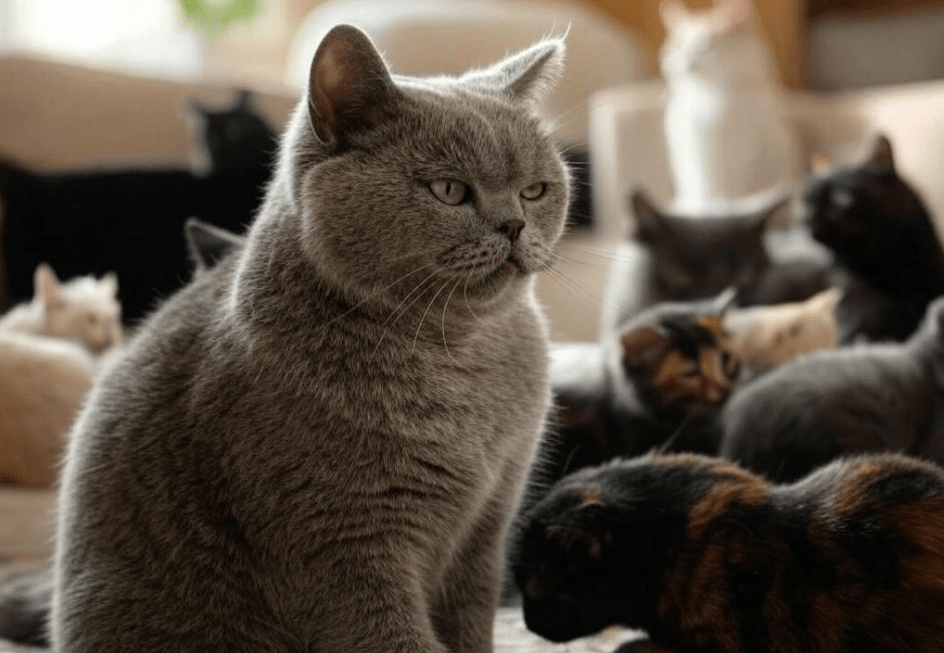
British Shorthair cats, with their dense, plush coats and affectionate personalities, are cherished companions known for their sturdy build and teddy-bear-like charm. However, their thick fur makes them particularly prone to hairballs, a common issue that can cause discomfort and health complications. Understanding why British Shorthairs are susceptible to hairballs and how to prevent them is essential for their well-being. This comprehensive guide explores the causes of hairballs, their risks, and practical prevention strategies, empowering you to keep your British Shorthair healthy, comfortable, and hairball-free.
Understanding Hairballs in British Shorthairs
Hairballs, or trichobezoars, are clumps of ingested fur that accumulate in a cat’s stomach or intestines, often expelled through vomiting. Cats groom themselves by licking their coats, swallowing loose fur in the process. While most fur passes through the digestive system, some can form hairballs, especially in breeds like the British Shorthair with dense, short coats. Though occasional hairballs are normal, frequent or severe cases can indicate underlying issues or lead to complications like intestinal blockages.
Why British Shorthairs Are Prone to Hairballs
Several factors contribute to the British Shorthair’s susceptibility to hairballs:
Dense, Plush Coat: Their thick, double-layered coat sheds regularly, increasing the amount of fur ingested during grooming.
Frequent Grooming: British Shorthairs are meticulous groomers, swallowing more fur than less fastidious breeds.
Shedding Patterns: Seasonal shedding, particularly in spring and fall, heightens hairball risk as more loose fur is ingested.
Body Weight: Their stocky build (9-18 pounds) can contribute to slower digestion, allowing fur to accumulate in the stomach.
Stress or Health Issues: Stress, allergies, or skin conditions can lead to excessive grooming, increasing hairball formation.
Understanding these factors helps you implement targeted prevention strategies tailored to your British Shorthair’s needs.
Risks and Complications of Hairballs
While occasional hairballs are manageable, frequent or untreated hairballs can pose health risks:
Gastrointestinal Upset: Hairballs can cause vomiting, loss of appetite, or lethargy, leading to discomfort.
Intestinal Blockages: Large or persistent hairballs may obstruct the intestines, a life-threatening condition requiring emergency surgery.
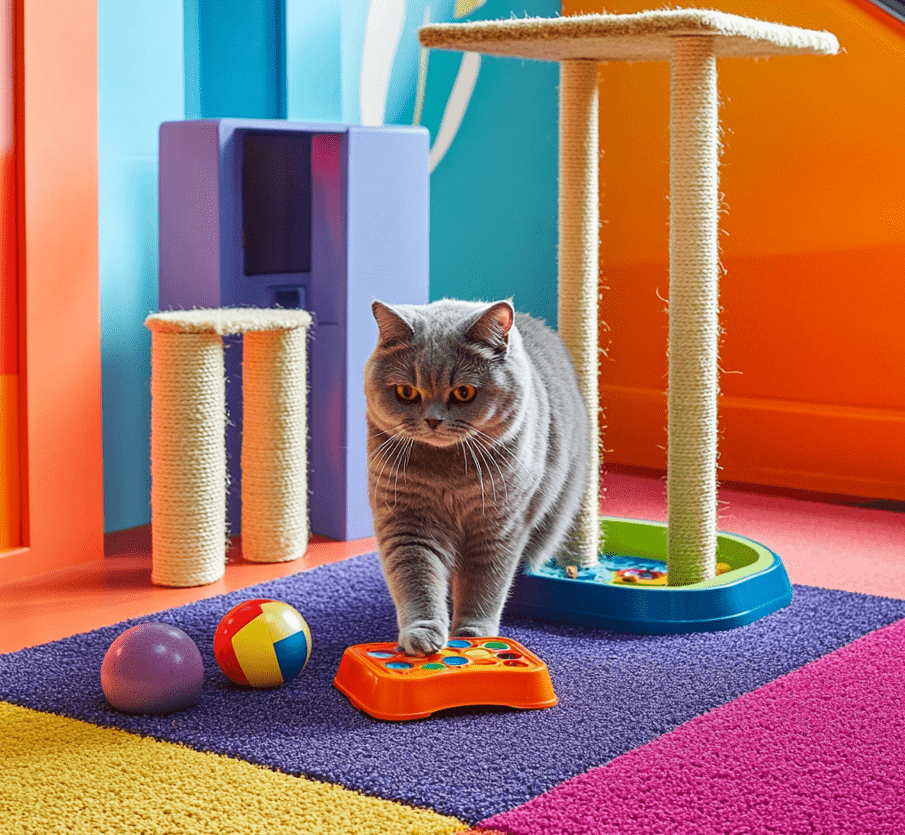
Nutrient Absorption Issues: Chronic hairballs can interfere with digestion, reducing nutrient uptake.
Secondary Infections: Repeated vomiting may irritate the esophagus or stomach, increasing infection risk.
Stress and Anxiety: Discomfort from hairballs can make your cat irritable or withdrawn.
Recognizing these risks underscores the importance of proactive hairball prevention.
Symptoms of Hairballs in British Shorthairs
Identifying hairball symptoms allows you to act quickly to prevent complications. Common signs include:
Frequent Vomiting: Regular vomiting of cylindrical, fur-filled masses is the hallmark of hairballs.
Retching or Gagging: Dry heaving or coughing without producing a hairball may indicate fur accumulation.
Loss of Appetite: A cat with a hairball may eat less due to stomach discomfort.
Lethargy: Reduced energy or reluctance to play can signal digestive issues.
Constipation or Diarrhea: Hairballs can disrupt normal digestion, causing irregular bowel movements.
Abdominal Discomfort: Your cat may show sensitivity when their belly is touched or adopt a hunched posture.
If your British Shorthair exhibits persistent vomiting, lethargy, or no bowel movements for 48 hours, contact your veterinarian immediately, as these may indicate a blockage.
Common Causes of Excessive Hairballs
Beyond their natural predisposition, certain factors can increase hairball frequency in British Shorthairs:
Inadequate Grooming Assistance: Without regular brushing, loose fur accumulates, increasing ingestion during self-grooming.
Poor Diet: Diets low in fiber or lacking moisture can slow digestion, trapping fur in the stomach.
Skin Conditions or Allergies: Itchy skin from fleas, allergies, or infections can lead to excessive grooming and fur ingestion.
Stress: Anxiety from environmental changes or lack of stimulation can cause over-grooming, contributing to hairballs.
Underlying Health Issues: Gastrointestinal disorders, such as inflammatory bowel disease, can impair fur passage through the digestive tract.
Addressing these causes through prevention strategies can significantly reduce hairball occurrence.
How to Prevent Hairballs in British Shorthairs
Preventing hairballs in British Shorthairs involves a combination of grooming, diet, environmental adjustments, and veterinary care. Below are evidence-based strategies to keep your cat hairball-free.
1. Regular Grooming to Reduce Loose Fur
Grooming is the first line of defense against hairballs, as it removes loose fur before your cat can ingest it.
Brush Frequently: Brush your British Shorthair 2-3 times weekly with a soft-bristled brush or de-shedding tool, like the FURminator, to remove loose fur. Increase to daily brushing during shedding seasons.
Use Grooming Gloves: For cats sensitive to brushes, grooming gloves provide a gentle alternative while bonding with your pet.
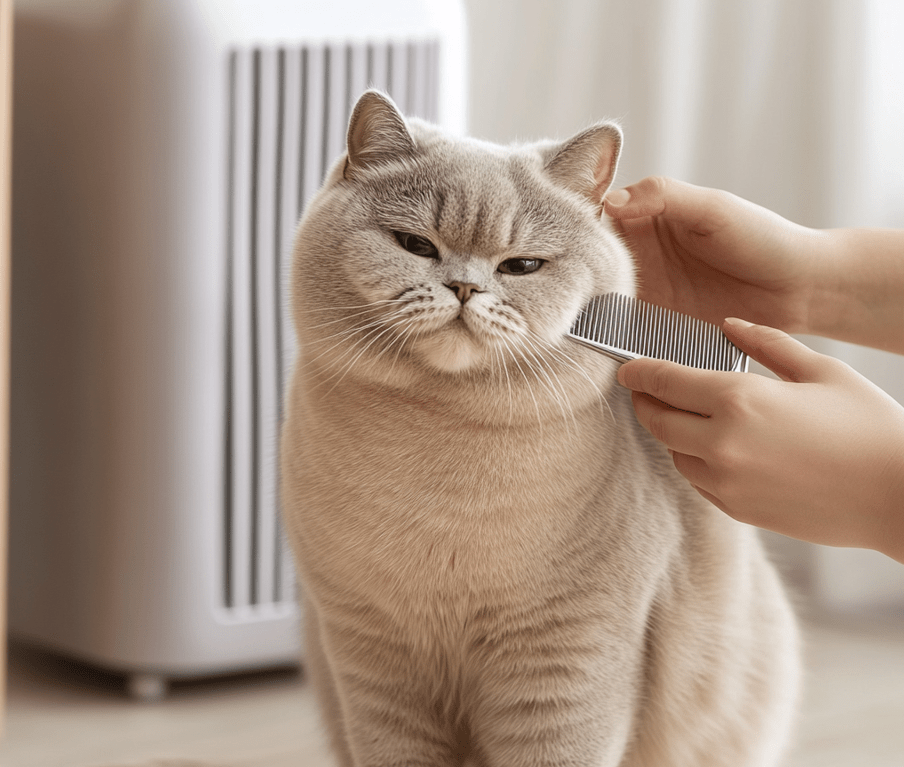
Bathe Occasionally: Bathe your cat every 4-6 weeks with a vet-recommended shampoo, like Douxo S3 Calm, to remove excess fur and dander. Ensure thorough drying to prevent skin irritation.
Check for Mats: Inspect for matted fur, especially in hard-to-reach areas like the belly or hindquarters, and gently remove with a comb or seek professional grooming if needed.
Regular grooming reduces the fur your British Shorthair swallows, minimizing hairball formation.
2. Feed a Hairball-Prevention Diet
A balanced, high-quality diet can promote healthy digestion and help fur pass through the digestive system.
High-Fiber Foods: Diets with added fiber, such as Hill’s Science Diet Hairball Control or Royal Canin Hairball Care, encourage fur to move through the intestines rather than accumulating in the stomach.
High-Moisture Diets: Wet food, with 70-80% moisture, supports digestion and prevents dehydration, which can slow fur passage. Include wet food daily to complement dry kibble.
Omega-3 Fatty Acids: Foods or supplements with fish oil, like Nordic Naturals Omega-3 Pet, promote healthy skin and coat, reducing excessive shedding.
Avoid Low-Quality Ingredients: Choose foods free from artificial additives or fillers, which can irritate the digestive system.
Consult your veterinarian to select a diet tailored to your British Shorthair’s needs, especially if they have a history of hairballs or digestive issues.
3. Use Hairball Remedies and Supplements
Specialized products can help prevent and manage hairballs in British Shorthairs.
Hairball Gels: Lubricants like Tomlyn Laxatone or Sentry Hairball Relief coat fur in the stomach, easing its passage through the intestines. Administer as directed, typically 1-2 times weekly.
Fiber Supplements: Vet-approved fiber powders, such as Vetasyl, can be mixed into food to promote digestion and fur elimination.
Probiotics: Supplements like Purina Pro Plan FortiFlora support gut health, improving digestion and reducing hairball risk.
Omega-3 Supplements: Fish oil capsules or liquids reduce shedding and skin irritation, minimizing grooming-related fur ingestion.
Always consult your veterinarian before introducing supplements to ensure they are safe and effective for your cat.
4. Encourage Proper Hydration
Adequate water intake supports digestion and helps fur move through the gastrointestinal tract.
Provide Fresh Water: Ensure clean, fresh water is available at all times, changed daily to stay appealing.
Use a Cat Water Fountain: British Shorthairs are drawn to running water. Fountains, like those from Catit or PetSafe, encourage drinking, reducing the risk of sluggish digestion.
Multiple Water Stations: Place water bowls in various locations, away from food and litter boxes, to make drinking accessible.
Incorporate Wet Food: Wet food significantly increases moisture intake, supporting digestion and kidney health.
Monitor your cat’s water intake and consult your vet if they drink less than usual, as this could indicate health issues.
5. Maintain a Stress-Free Environment
Stress can lead to over-grooming, increasing hairball risk in British Shorthairs.
Create Safe Spaces: Provide cozy beds, igloos, or high perches where your cat can relax undisturbed.
Use Pheromone Diffusers: Feliway diffusers release calming pheromones, reducing stress-related grooming behaviors.
Enrich Their Environment: Offer interactive toys, scratching posts, and window perches to keep your cat mentally stimulated and reduce boredom.
Maintain Routine: Consistent feeding, play, and litter box schedules create a sense of security, minimizing anxiety.
A calm environment discourages excessive grooming, lowering hairball frequency.
6. Optimize Litter Box Conditions
A clean, accessible litter box supports digestive health, as stress from avoiding the box can contribute to hairball issues.
Provide Enough Boxes: Follow the “n+1” rule—one litter box per cat plus one extra. For a single British Shorthair, provide at least two boxes.
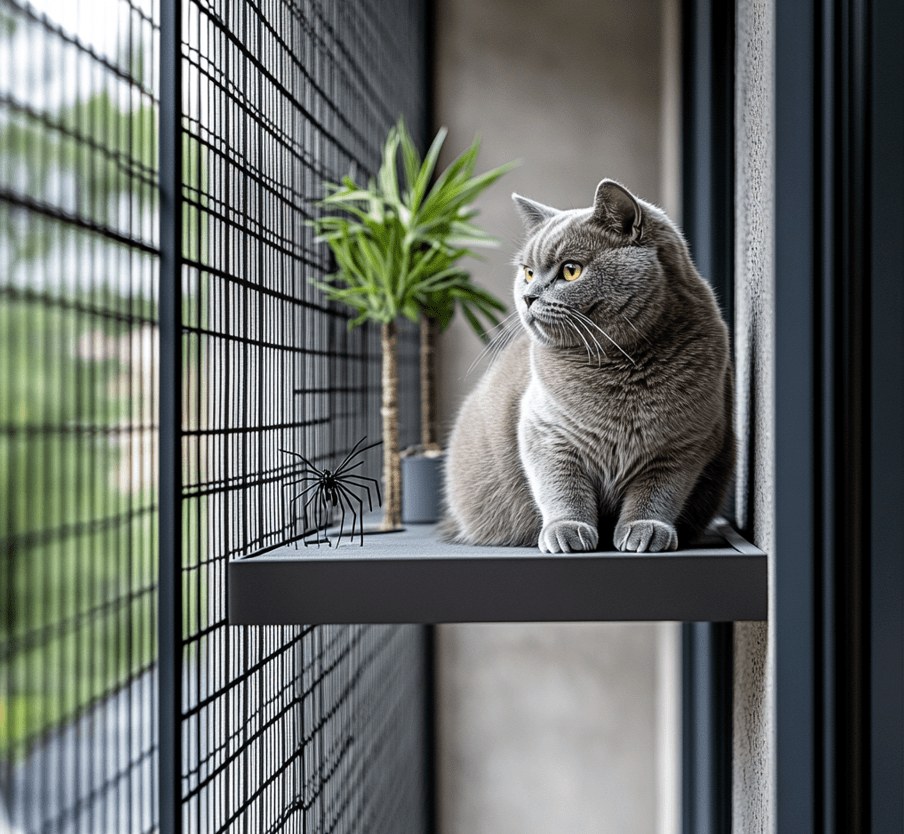
Choose Large Boxes: Use spacious, low-entry boxes, like the Petmate Giant, to accommodate their sturdy frame.
Select Unscented Litter: Opt for dust-free, unscented litter, such as World’s Best Cat Litter, to avoid respiratory or skin irritation.
Clean Daily: Scoop boxes daily and change litter weekly to encourage regular use and reduce stress.
A stress-free litter box environment promotes healthy digestion and reduces hairball risk.
7. Schedule Regular Veterinary Checkups
Routine veterinary care is essential for monitoring hairball frequency and ruling out underlying health issues.
Annual or Biannual Exams: Regular checkups allow your vet to assess your cat’s digestive health, skin, and coat.
Blood and Fecal Tests: These can identify conditions like inflammatory bowel disease or parasites that contribute to hairballs.
Skin and Allergy Checks: Allergies or skin infections may cause over-grooming, increasing hairball risk. Your vet can recommend treatments like antihistamines or omega-3 supplements.
Dental Care: Oral health issues can lead to stress or reduced appetite, indirectly affecting digestion. Regular dental cleanings are crucial.
Early detection of health problems prevents hairballs from becoming a chronic issue.
8. Monitor for Skin and Allergy Issues
Skin conditions or allergies can lead to excessive grooming, increasing hairball formation.
Check for Fleas: Use vet-approved flea preventatives, like Revolution, to prevent flea allergy dermatitis, which causes itching and over-grooming.
Monitor for Allergies: Environmental or food allergies can trigger scratching or licking. Work with your vet to conduct food trials or allergy tests if symptoms persist.
Treat Skin Infections: Bacterial or yeast infections from scratching require veterinary treatment, such as antibiotics or antifungals.
Addressing skin issues reduces grooming-related fur ingestion, lowering hairball risk.
Common Hairball-Related Conditions in British Shorthairs
Frequent hairballs can contribute to or signal underlying health issues:
Gastrointestinal Disorders: Conditions like inflammatory bowel disease or motility issues can slow fur passage, increasing hairball formation.
Skin Allergies: Allergies to fleas, food, or environmental factors can cause over-grooming, leading to more hairballs.
Stress-Related Issues: Anxiety can trigger excessive grooming, exacerbating hairball problems.
Obesity: Excess weight can slow digestion, allowing fur to accumulate in the stomach.
Addressing these conditions through veterinary care and prevention strategies reduces hairball frequency and improves overall health.
The Role of Observation in Hairball Prevention
Regular observation is key to managing hairballs in British Shorthairs, as symptoms can be subtle.
Track Vomiting: Note the frequency and appearance of hairballs using a journal or app.
Monitor Grooming: Excessive licking or chewing may indicate stress, allergies, or skin issues.
Check Stool and Appetite: Changes in bowel movements or eating habits can signal digestive problems.
Consistent monitoring allows you to act quickly when hairball issues arise, preventing complications.
Choosing the Right Products for Hairball Prevention
Selecting high-quality products can enhance your hairball prevention efforts.
Hairball Control Food: Hill’s Science Diet Hairball Control or Royal Canin Hairball Care are formulated to reduce hairballs.
Hairball Remedies: Tomlyn Laxatone or Sentry Hairball Relief gels are effective and palatable.
Grooming Tools: The FURminator or Hertzko Self-Cleaning Brush remove loose fur efficiently.
Water Fountains: Catit or PetSafe fountains encourage hydration.
Litter: Unscented, dust-free options like Dr. Elsey’s Precious Cat minimize irritation.
Read labels, check for veterinary endorsements, and consult your vet to ensure products meet your cat’s needs.
Common Mistakes to Avoid
When preventing hairballs in British Shorthairs, steer clear of these pitfalls:
Skipping Grooming: Infrequent brushing allows loose fur to accumulate, increasing hairball risk.
Feeding Low-Quality Diets: Foods lacking fiber or moisture can exacerbate hairball issues.
Ignoring Stress: Stress-related over-grooming can go unnoticed, leading to more hairballs.
Delaying Veterinary Care: Persistent hairballs may signal health issues, so don’t dismiss frequent vomiting.
Proactive, informed care prevents these mistakes and promotes your cat’s well-being.
Advances in Feline Hairball Management
Recent advancements have improved hairball prevention for British Shorthairs:
Specialized Diets: New formulas with optimized fiber blends enhance fur passage.
Grooming Technology: Advanced de-shedding tools reduce fur ingestion more effectively.
Probiotic Research: Studies show probiotics improve gut motility, aiding hairball prevention.
Behavioral Insights: Better understanding of stress-related grooming informs holistic prevention strategies.
These innovations empower owners to manage hairballs effectively.
Conclusion

British Shorthairs are prone to hairballs due to their dense coats and grooming habits, but with the right strategies, you can minimize their occurrence and keep your cat comfortable. Regular grooming, a hairball-prevention diet, proper hydration, and stress management are key to reducing hairball risk. Veterinary care and observation further ensure early detection of underlying issues, preventing complications like blockages or digestive disorders.
With dedication and proactive care, you can help your British Shorthair live a hairball-free, healthy life. For personalized advice, consult your veterinarian to create a tailored hairball prevention plan for your beloved feline companion.

